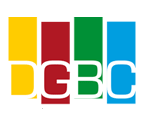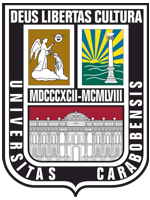Gamified apps in the mathematics classroom
DOI:
https://doi.org/10.46502/issn.1856-7576/2024.18.03.4Keywords:
Gamification, gamification tools, innovation in mathematics, mathematics, applications, learning.Abstract
The integration of gamification elements in educational environments is constantly growing, with the evident proliferation of numerous computer applications designed for this purpose. It is pertinent to highlight that, particularly in the field of mathematics, the range of specific options is limited. In this context, the main objective of this study is to examine the content and characteristics of applications used in secondary education, about the fundamental criteria established by the Werbach and Hunter pyramid, a reference framework in this area since its conceptualization. To carry out this analysis a representative set of the most commonly used applications to date in the context of educational gamification has been selected, as well as another specifically designed for learning mathematics. The results obtained reveal an adequate level of compliance with the three fundamental elements proposed by this framework: dynamics, mechanics, and components, although certain variations are identified among the different applications examined. From this evaluation, it can be concluded that there has been notable progress in the development and programming of gamified applications, with a trend towards adopting attractive educational approaches and effective methodologies for learning.
References
Dichev, C., & Dicheva, D. (2017). Gamifying education: what is known, what is believed and what remains uncertain: a critical review. International journal of educational technology in higher education, 14, 1-36. https://doi.org/10.1186/s41239-017-0042-5
Dreimane, S. (2021). Gamification before its definition – An overview of its historical development. INTED2021 Proceedings, 7187-7193. https://doi.org/10.21125/inted.2021.1434
Fernández-Arias, P., Ordóñez-Olmedo, E., Vergara-Rodríguez, D., & Gómez-Vallecillo, A. I. (2020). La gamificación como técnica de adquisición de competencias sociales. Revista Prisma Social, (31), 388-409.
Flórez Arias, N. A. (2022). Pensar la virtualidad desde la didáctica. Reflexión crítica de los entornos virtuales de educación. Actualidades Pedagógicas, 1(77), 6. https://doi.org/10.19052/ap.vol1.iss77.6
Gadea, L. G., & Zegarra, N. G. (2022). Resiliencia, juego y creatividad: puntos clave en el desarrollo humano. Avances en Psicología, 30(1), e2516-e2516. https://doi.org/10.33539/avpsicol.2022.v30n1.2516
Gartner (2011). Maverick Research: Motivation, momentum and meaning: How Gamification can inspire engagement. United Kingdom: Gartner Research.
Hui, H. B., & Mahmud, M. S. (2023). Influence of game-based learning in mathematics education on the students' cognitive and affective domain: A systematic review. Frontiers in psychology, 14, 1105806. https://doi.org/10.3389/fpsyg.2023.1105806
Kalogiannakis, M., Papadakis, S., y Zourmpakis, A.-I. (2021). Gamification in Science Education. A Systematic Review of the Literature. Education sciences, 11(1), 22. https://doi.org/10.3390/educsci11010022
Kapp, K. M. (2012). The gamification of learning and instruction: game-based methods and strategies for training and education. John Wiley & Sons.
Lampropoulus, G., & Sidiropoulus, A. (2024). Impact of Gamification on Students’ Learning Outcomes and Academic Performance: A Longitudinal Study Comparing Online, Traditional, and Gamified Learning. Education Sciences, 14(4), 367. https://doi.org/10.3390/educsci14040367
Li, M., Ma, S., & Shi, Y. (2023). Examining the effectiveness of gamification as a tool promoting teaching and learning in educational settings: a meta-analysis. Frontiers in Psychology, 14, 1253549. https://doi.org/10.3389/fpsyg.2023.1253549
Marín, I., & Hierro, E. (2013). Gamificación: El poder del juego en la gestión empresarial y en la conexión con los clientes. Madrid, España: Empresa Activa, 152.
Ojeda-Lara, O. G., & Zaldívar-Acosta, M. D. S. (2023). Gamificación como Metodología Innovadora para Estudiantes de Educación Superior. Revista Tecnológica-Educativa Docentes 2.0, 16(1), 5-11. https://doi.org/10.37843/rted.v16i1.332
Ramírez, J. L. (2014). Gamificación: mecánicas de juegos en tu vida personal y profesional. Alpha Editorial.
Taylor, M. E., & Boyer, W. (2020). Play-based learning: Evidence-based research to improve children’s learning experiences in the kindergarten classroom. Early Childhood Education Journal, 48(2), 127-133. https://doi.org/10.1007/s10643-019-00989-7
Vázquez Cano, E. (2021). Medios, recursos didácticos y tecnología educativa. Editorial UNED.
Vergara, D., Mezquita, J. M. M., Valecillo, A. I. G., & Fernández-Arias, P. (2020). Sistemas de respuesta de estudiantes: evolución hacia a la gamificación. Revista Eduweb, 14(2), 236-250. Recuperado a partir de https://www.revistaeduweb.org/index.php/eduweb/article/view/27
Werbach, K., & Hunter, D. (2012). For the Win: How Game Thinking Can Revolutionize Your Business. Harrisburg: Wharton Digital Press.
Zourmpakis, A. I., Kalogiannakis, M., & Papadakis, S. (2023). Adaptive gamification in science education: An analysis of the impact of implementation and adapted game elements on students’ motivation. Computers, 12(7), 143. https://doi.org/10.3390/computers12070143
Published
How to Cite
Issue
Section
License
Copyright (c) 2024 Diego Vergara Rodríguez, César Domínguez Zapatero, Patricia Castro López, Lorena Rodríguez-Calzada

This work is licensed under a Creative Commons Attribution 4.0 International License.














